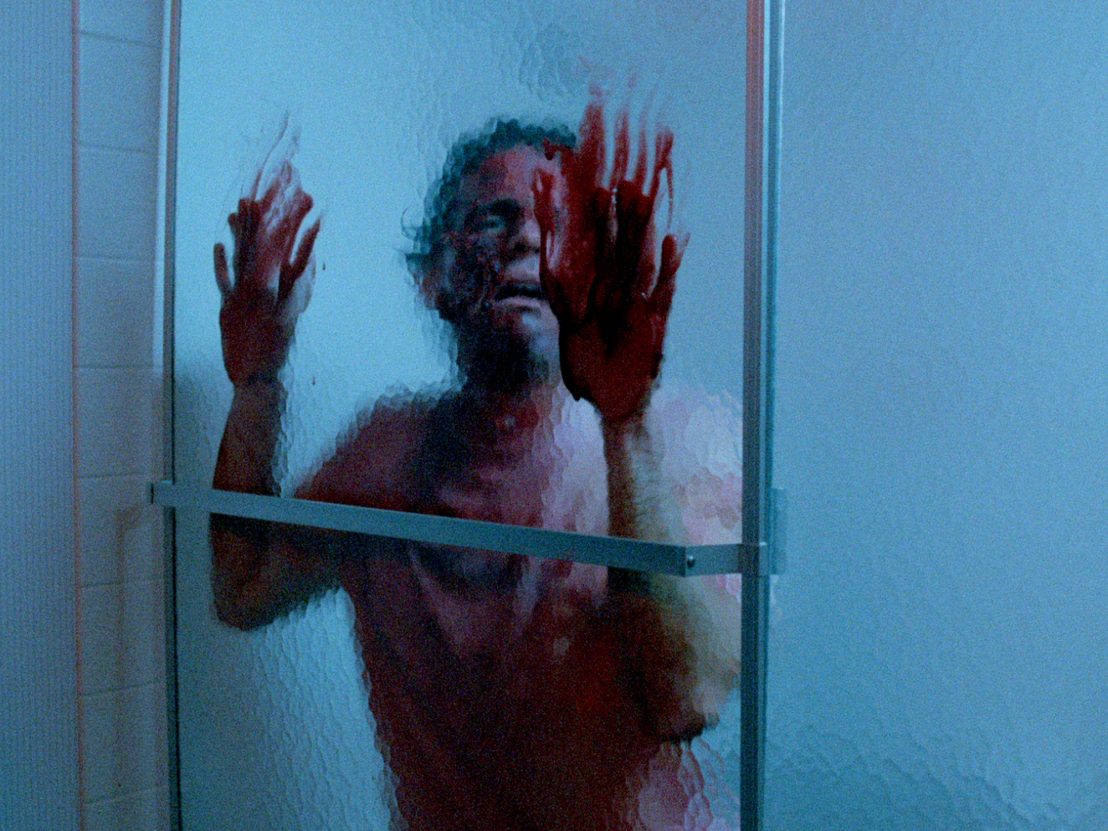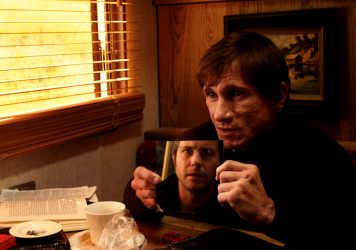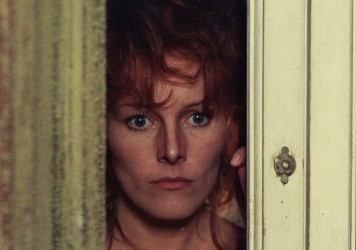
“The other day I came into her room and she was repeating a word over and over in her sleep. Kolobos.” “Kolobos? What does it mean?” “I have no idea.” “Six years of med school, all I really needed was a good dictionary. Who knew?”
This conversation, between Dr Waldman (Kim Thomas) and Dr Jurgen (Todd Beadle), concerns a heavily bandaged and traumatised Jane Doe who, even before she was knocked over by a car and brought into the hospital, had already recently sustained severe facial lacerations inflicted with surgical precision, as well as bearing much older scars from what appear to be past acts of self-harm and even a suicide attempt.
A flashback triggered by an ad in the local paper makes up the bulk of Daniel Liatowitsch and David Todd Ocvirk’s Kolobos. Days earlier, the patient, mentally unstable and institutionalised artist Kyra (Amy Weber), joins four other ‘freeloader’ volunteers – student Gary (John Fairlie), ambitious actress Erica (Nichole Pelerine), fast food cashier Tina (Promise LaMarco) and stand-up comic Tom (Donny Terranova) – for an artist’s “groundbreaking experimental film“ where, in exchange for free food and board, they will live together in a house and be recorded 24/7 on CCTV cameras. There is, however, someone else in the house – a faceless figure (Ilia Volok) who watches and waits for the right moment to attack, whether through bladed booby traps or more direct means.
Here we see the intersection of three different ideas, two of which are backward-looking, while the third looks forward to a medium that would come to dominate the following decade. Firstly, the giallo genre, with its merging of aesthetics, psychology, identity confusion and murder, is evoked right from the impressionistic opening credits that show black-gloved hands passing over hand-drawn sketches and wiring up a house, all to the accompaniment of William Kidd’s overtly Suspiria-inspired score.
Secondly, Kolobos places itself in the tradition not just of the classic slasher, with its characters being killed one after the other by an unseen assailant, but also of the Scream-style ’90s meta-slasher. This reflexive element comes to the fore as Erica insists that her new housemates watch videos of the entire Slaughterhouse Factor horror franchise in which she had been cast as a vengeful killer.
Their varied reactions to one of these films, from Tom’s dismissive, “It’s a Friday the 13th rip-off… These are all the same… so shitty… It sucks,” to Gary’s academic reading of the film’s “psychological rationalisation” and the protagonist’s “multi-faceted personage”, represent a gamut of potential responses to Kolobos itself, which might be regarded either as yet another by-numbers instantiation of slice-and-dice, or as a psychedelic mapping of a character’s “inner demons” through the stylised language of genre.
The third structural element of Kolobos was way ahead of a coming zeitgeist. Made the same year that Big Brother was first broadcast on Dutch television, Kolobos adopts a reality TV format, with its houseful of participants and its ubiquitous cameras, that had not yet become properly popularised, and so anticipates by some years other horror films – like My Little Eye, Halloween: Resurrection and TV’s Dead Set – that would exploit this format.
Of course, reality itself is up for grabs here, as Kyra’s horrific experiences are intercut with her traumatic delusions, leaving us uncertain, at least until the end, where the truth lies, and how much of what we see might belong merely to a theatre of the ‘hebephrenic’ imagination.
We are first introduced to male chauvinist Tom at a women’s rights group where he is doing a disastrously misjudged comedy set. Shortly afterwards he discovers to his shock that the pretty woman with whom he has been aggressively flirting is the next paid act: a female impersonator. Here, as so often in gialli and slashers, gender is unstable. If you want to know the actual meaning of the film’s mystifying title, all you really need do is consult Wiktionary (not available in 1999).
Ultimately, the film itself reveals the word’s meaning too, so I won’t spoil – except to observe that kolobos is an Ancient Greek ‘two-termination’ adjective, which is to say that it, perhaps significantly, unifies its masculine and feminine forms.
Kolobos is released by Arrow on Blu-ray in a brand new 2K restoration from the original negative on 11 March.
Published 11 Mar 2019

By Adam White
Wes Craven’s seminal 1996 film occupies a uniquely female space.

By Anton Bitel
Resolution, from filmmaking duo Justin Benson and Aaron Moorhead, is a true original.

Iconic stars like Anita Strindberg and Edwige Fenech are the thread that ties this deviant subgenre together.